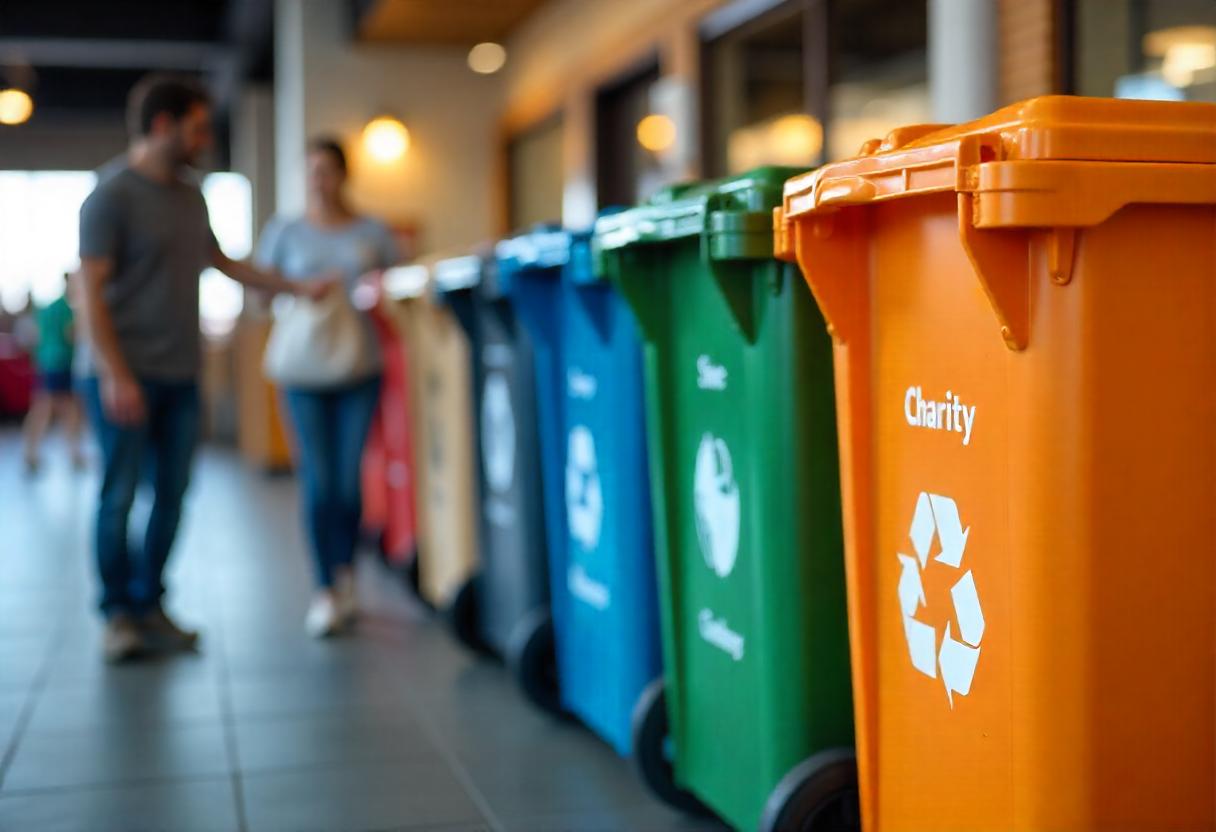HUMAN RIGHTS
Charity Bins: The Ultimate Guide to Responsible Giving

Charity bins offer an easy and convenient way for people to donate clothes, shoes, and household items to those in need. These donation points, often found in supermarkets, parking lots, and community centers, help reduce waste, promote sustainability, and support charitable organizations.
However, not all charity bins operate ethically, and improper donations can lead to waste instead of support. Understanding how these bins function, what to donate, and where your items go can ensure that your contribution makes a real impact.
In this guide, we will explore everything you need to know about charity bins, from how they work to best practices for donating responsibly.
How Charity Bins Work
Charity bins are collection points where people can drop off gently used items for donation. They are typically managed by nonprofit organizations, social enterprises, or commercial recyclers who either distribute the donations or repurpose them.
1. Collection and Sorting
- Donations are collected by the managing organization at regular intervals.
- Items are sorted based on quality and usability—some go directly to people in need, while others are recycled.
2. Distribution
- Wearable clothes are sent to thrift stores, shelters, or international aid programs.
- Damaged textiles may be recycled into industrial materials like insulation or cleaning cloths.
- Household goods and accessories are resold, with proceeds funding charity programs.
3. Recycling and Waste Management
- Unsalvageable items are often sent to textile recycling facilities rather than landfills.
- Some bins partner with fashion brands to encourage sustainable clothing disposal.
What Can You Donate in Charity Bins?
To ensure that your donations are helpful rather than burdensome, it’s essential to donate only acceptable items.
✅ Items You Can Donate
Gently worn clothes and shoes
Bags, accessories, and belts
Blankets, sheets, and towels
Books, toys, and small household goods
Unopened hygiene products (soap, toothpaste, etc.)
🚫 Items You Should Avoid
Wet or moldy clothing
Damaged electronics or furniture
Used undergarments and socks
Expired food or medication
Broken or hazardous items
If you’re unsure, check the instructions on the bin or visit the charity’s website for specific guidelines.
Where to Find Charity Bins Near You
Charity bins are commonly placed in accessible locations to encourage donations.
- Supermarkets & Shopping Centers: Many retail chains host charity bins to promote giving.
- Schools & Universities: Some institutions collect donations as part of community service programs.
- Religious Centers & Churches: Many faith-based organizations operate charity bins for social outreach.
- Public Parks & Community Centers: Local governments often partner with nonprofits to provide collection points.
- Recycling Centers: Some donation bins are integrated with recycling drop-off sites.
To locate a bin near you, check the websites of organizations like Goodwill, Salvation Army, or Planet Aid.
The Environmental Impact of Charity Bins
Charity bins play a crucial role in reducing landfill waste and promoting a circular economy.
1. Reducing Textile Waste
- Over 92 million tons of textile waste is generated globally each year.
- Donating clothes through charity bins extends their lifespan and prevents waste accumulation.
2. Recycling Unusable Items
- Many donated textiles are repurposed into industrial rags, insulation, or new fabric materials.
- Organizations collaborate with recycling plants to minimize environmental impact.
3. Lowering Carbon Footprint
- The production of new clothes consumes vast resources like water and energy.
- Reusing clothing through donations helps reduce demand for new textile production, cutting carbon emissions.
By using charity bins responsibly, you are contributing to a sustainable and ethical donation cycle.
Common Problems with Charity Bins
Although charity bins serve an essential purpose, they are not without challenges.
1. Overflow and Illegal Dumping
- Many bins become overfilled, leading to littering and community complaints.
- Dumping non-donatable items like furniture and hazardous waste increases cleanup costs.
2. Fraudulent or Unethical Operators
- Not all donation bins are operated by legitimate charities—some are commercial for-profit companies.
- Always verify the organization behind the bin before donating.
3. Poor Maintenance and Theft
- Some bins are poorly maintained, leading to donations being damaged by rain.
- Theft of donations can occur if bins are not monitored or secured.
Also read: Goodwill Charity Score: Evaluating the Impact of Your Donations
How to Donate Responsibly Using Charity Bins
To ensure your donation has the best possible impact, follow these responsible giving tips:
1. Research Before You Donate
- Look for reputable organizations that are transparent about where donations go.
- Avoid bins without clear branding or charity details.
2. Package Donations Properly
- Place clothes in sealed bags to protect them from rain and pests.
- Ensure electronics or fragile items are safely packed if accepted.
3. Donate Only When Bins Are in Good Condition
- If a bin is overflowing, find another location or contact the charity.
- Never leave items outside the bin, as they may be discarded as trash.
4. Consider Alternative Ways to Donate
- Drop off donations at charity stores directly to ensure they reach those in need.
- Schedule home pickups for large items like furniture.
Conclusion
It offer an accessible and eco-friendly way to donate clothes and household items to those in need. However, responsible donating is crucial to ensure items are used effectively rather than going to waste.
By researching reputable organizations, donating only acceptable items, and following proper donation practices, you can maximize the impact of your generosity while promoting sustainability.
Next time you clean out your closet, consider using a charity bin wisely to make a meaningful difference!
FAQs
Are all charity bins owned by nonprofit organizations?
No. Some charity bins are operated by for-profit companies that resell donations for profit. Always check the organization’s credentials before donating.
What happens to donations that aren’t used?
If items are not in usable condition, they are often sent for recycling or textile repurposing rather than being discarded.
Can I donate food items in charity bins?
Most charity bins do not accept food due to spoilage risks. Instead, donate non-perishable items directly to food banks.
Why do some charity bins have restrictions on what can be donated?
Organizations set restrictions to ensure donated items are useful and to prevent waste management issues.
Is it better to donate directly to a charity store instead of using a bin?
Yes, direct donations to charity stores reduce sorting and logistical costs, ensuring more items reach those in need.
Can I donate household appliances into it?
Generally, large appliances are not accepted. Instead, check with charities that offer home pickups for bulky items.
How can I report an overflowing or misused charity bin?
You can report issues to the managing charity through their website or contact local authorities if the bin is causing a public nuisance.
-

 HUMAN RIGHTS5 months ago
HUMAN RIGHTS5 months agoMercy Ships Scandal: Unraveling the Truth Behind the Allegations
-

 SOCIAL AWARENESS5 months ago
SOCIAL AWARENESS5 months agoIs Helping Hands Legit? Unveiling the Truth Behind This Organization
-

 HUMAN RIGHTS6 months ago
HUMAN RIGHTS6 months agoHuman Rights Issues: Challenges and Progress in a Globalized World
-

 SOCIAL AWARENESS5 months ago
SOCIAL AWARENESS5 months agoNational Charity League: A Legacy of Leadership and Service
